If you live in Florida, or anywhere with sandy soil for that matter, you know the challenges of growing and maintaining a healthy lawn. Not only does your grass require lots of water to stay lush and green during the hot summers, it needs special care to survive in this unique environment. That’s why finding the right type of grass is so important – it determines how easily your lawn will thrive on its own. And when it comes to deciding which kind is best for Florida sandy soil, there are several factors to consider. In this blog post we’re going to dive into what makes a particular type of grass suitable for our climate here in Florida, as well as discussing some of our top recommended picks!
Table of Contents
Can Grass Grow In Sand?
Yes, it is possible for grass to grow in sand. In fact, many of the warm-season grasses found throughout Florida are well adapted to sandy soils. Zoysia grass, St. Augustine grass and Bermuda grass all thrive in sandy soil while providing ample ground cover and a lush green lawn. All three of these types of grass require at least 8 hours of sunlight per day and regular watering to remain healthy.
By selecting the right grass for your lawn and properly caring for it, you can have a lush green lawn even in sandy soil. With the correct maintenance, such as watering deeply and regularly, fertilizing when needed and mowing correctly, your grass will grow healthy and strong. The key is to choose the best type of grass that works best with Florida’s sandy soil so you can enjoy a beautiful lawn all year long! [1]
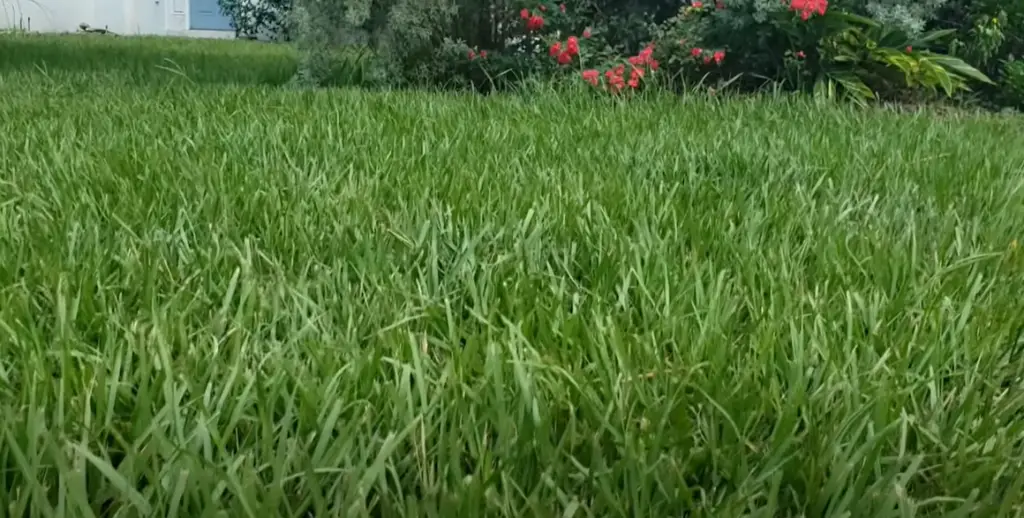
How Is Florida Soil Different From Others?
Florida soil is unique in its composition. It has a high content of sand and low levels of organic matter, which make it difficult to retain moisture and nutrients.
Additionally, the sandy nature of the soil also means that it drains quickly and doesn’t hold onto water very well. This makes Florida soil much drier than other soils in other parts of the country, making it important to select grass varieties that can handle drought conditions.
Furthermore, Florida’s hot climate can cause grass to suffer from heat stress if not given proper care. Despite these challenges, there are several types of grasses that thrive in Florida soils when given appropriate maintenance.
Grass Types That Grow In Sand
Zoysia Grass
It is one of the best grass types to grow in Florida’s sandy soil. It spreads rapidly, has good drought-tolerance and requires minimal nutrients to thrive. It also resists weed growth and stands up well to wear and tear from foot traffic.
Tall Fescue
Tall Fescue is an upright, finer-bladed grass that grows well in sandy soils and requires minimal irrigation. It’s moderately drought-tolerant and stands up to wear from foot traffic. It does require more fertilizer than Zoysia grass to maintain its dense texture. [2]
Bermudagrass
Bermudagrass is an aggressive, fast-growing warm-season turfgrass that thrives in sandy soils. It is strong enough to withstand heavy foot traffic and has good drought tolerance, however it will require regular mowing and fertilization when grown in Florida’s sandy soil.
St Augustine Grass
St Augustine grass is another popular choice for planting in sandy soils because it grows well regardless of the amount of nutrients and water it receives. It has a coarse texture and is resistant to wear from foot traffic, however it requires significant maintenance with regular mowing and fertilizing.
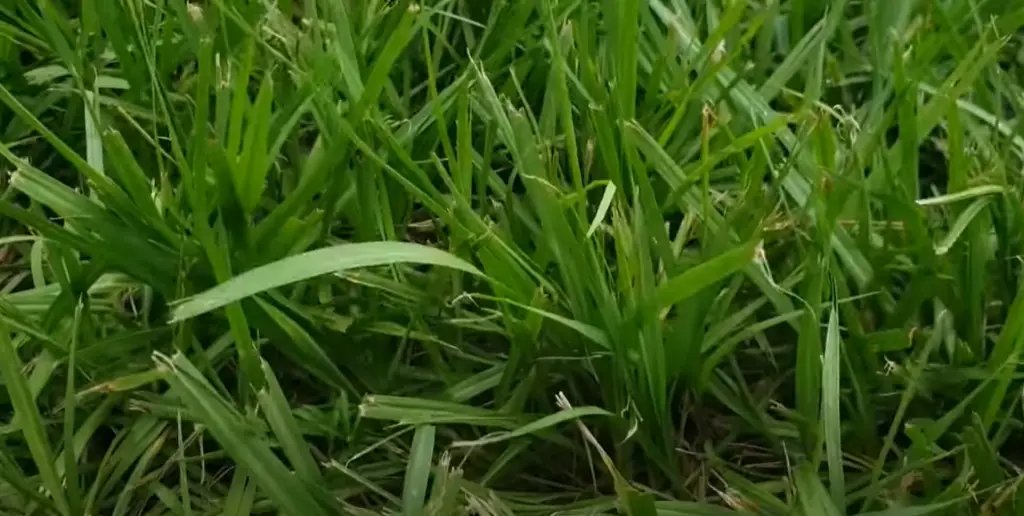
Seashore Paspalum
Seashore Paspalum is a warm season grass that grows well in sandy soils along the coast. It thrives in a highly saline environment and can tolerate extreme temperatures, making it an ideal choice for coastal areas. It has excellent drought tolerance and needs minimal fertilizer to maintain its attractive green color. [3]
Centipede Grass
Centipede grass is a slow-growing, low-maintenance grass that adapts well to sandy soils. It’s popular in the South due to its ability to withstand extremes of heat and dryness. It requires minimal fertilization, although regular mowing will help keep it healthy and attractive.
Bahia Grass
Bahia grass is a tough, drought-tolerant grass that grows well in sandy soil. It has good wear resistance and is not affected by salt spray, making it an ideal choice for coastal areas. However, it does require regular mowing and fertilization to keep it healthy and attractive.
These are some of the best grass types for Florida’s sandy soils. Each type of turfgrass comes with its own set of advantages and disadvantages, so research each one carefully before you make your decision. With the proper care, these grasses can provide a lush green lawn that will last for years to come.
What To Consider When Choosing The Best Grass For Sandy Soil
Type of Grass
When it comes to choosing the best grass for sandy soil, there are a few different types to consider. Bermuda and St. Augustine are both popular choices for Florida’s sandy soils. Both of these grasses need full sunlight, but Bermuda is more tolerant of drought and salt than St. Augustine, making it ideal for areas that may experience periods of dryness or salty air.
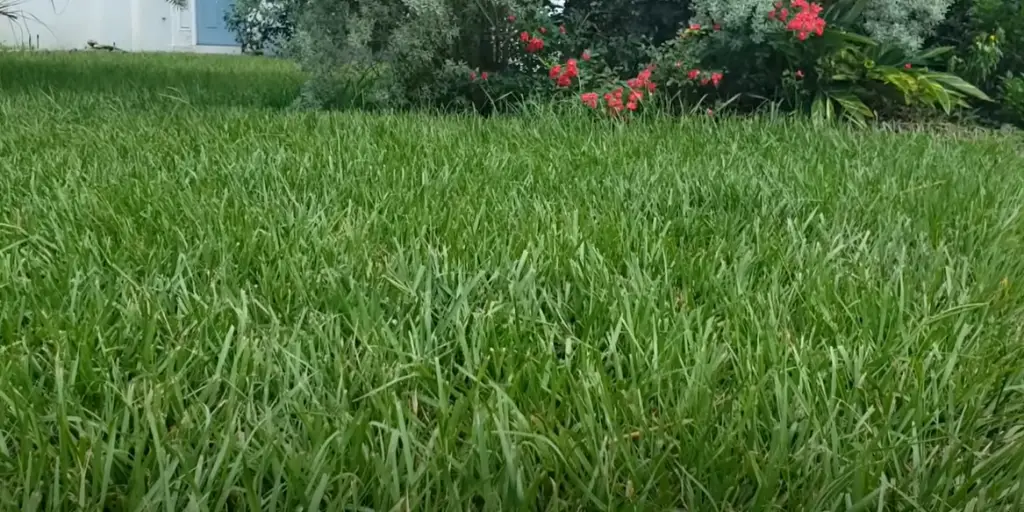
Maintenance Requirements
It’s important to consider what kind of maintenance requirements you have when selecting the best grass for sandy soil in Florida. Bermuda needs to be mowed regularly and requires supplemental fertilizer throughout the year, while St. Augustine can stand up better to wear-and-tear and will require less frequent mowing and fertilizing.
Drought Tolerance
If your area experiences periods of drought, you’ll want to choose a grass that is more tolerant of dry conditions. Bermuda is a good choice for this as it has excellent drought tolerance and can survive with minimal water. St. Augustine does require regular watering to thrive, so it may not be the best choice for drought-prone areas. [4]
Cost
Cost should also factor into your decision when selecting the best grass for sandy soil in Florida. Bermuda may be more expensive initially but will cost less in maintenance over time compared to other types of grasses, making it a good investment if you are looking for something that will last longer and require less upkeep. St. Augustine is generally cheaper upfront but will require more frequent fertilization and mowing to maintain its lushness.
Root System
Whichever type of grass you choose, you’ll want to make sure that it has a strong root system. The roots should be able to hold onto the sandy soil and provide enough nourishment for the grass to thrive. Bermuda is known for its deep root system, which helps it survive in tougher conditions, while St. Augustine tends to have less developed roots.
Humidity And Heat
Finally, you’ll want to consider the humidity and heat levels of your area when selecting the best grass for sandy soil in Florida. Both Bermuda and St. Augustine can handle the hot summers in the state, but Bermuda is more tolerant of humid conditions. If your area experiences high humidity throughout the year, then choosing Bermuda may be a better choice as it will be able to withstand those conditions better than St. Augustine.
No matter what type of grass you choose for your sandy soil, make sure that you research its specific requirements so that you can ensure a healthy garden or lawn for years to come! With careful consideration and planning, you should have no problem finding the best grass for sandy soil in Florida.
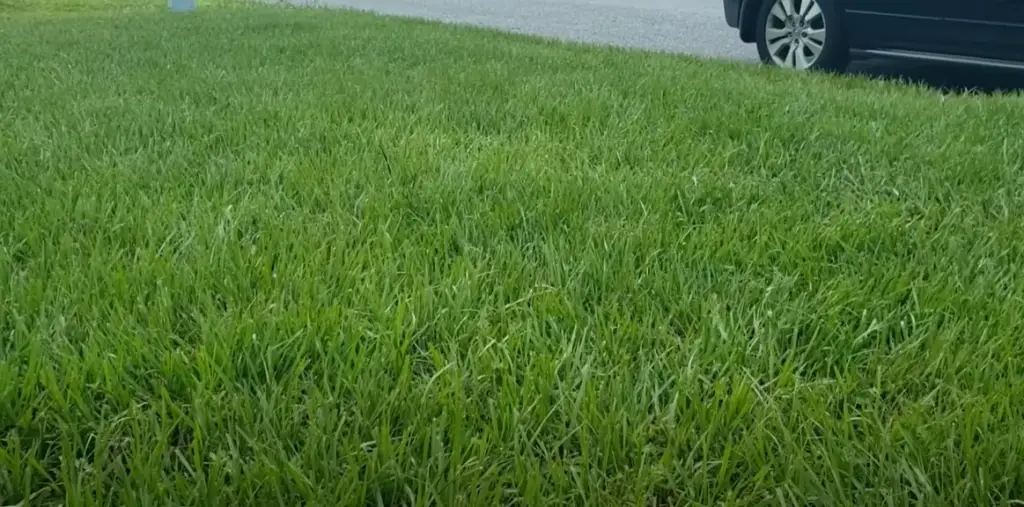
How To Prepare Florida Soil For Grass?
When planting grass in the sandy soils of Florida, there are certain steps that need to be taken to ensure it has a chance to take root and grow. Preparing the soil correctly is essential for successful grass growth.
The first step is to break up the compacted soil with either a garden tiller or shovel. This will allow water and nutrients to penetrate deeper into the ground and make sure your plants’ roots can access them more easily. Once you have loosened up the soil, mix in some organic matter such as compost or peat moss. This will help increase drainage, improve nutrient availability and raise acidity levels if needed.
Next, test your soil pH level using a kit from your local garden center. Most grass types prefer soil in the acidic range of 6.0-6.5 and adding sulfur to your soil can help balance out any fluctuations if needed.
Finally, make sure you aerate on a regular basis by punching holes into the soil with an aerator or spading fork. This will help create additional air pockets and provide more space for roots to grow.
By following these simple steps, you will be well on your way to having a lush, healthy lawn in no time! [5]
How Do I Treat My Lawn In Sandy Soil?
Taking care of your lawn in sandy soil can be challenging, but it doesn’t have to be daunting. To make sure that you get the best results from your grass, there are a few steps that you should take to properly maintain your lawn:
- Make Sure You Are Planting The Right Kind Of Grass – When planting grass in Florida’s sandy soil, make sure to select one of the types that is recommended for this particular region. St. Augustine and Bahia grasses are two varieties that do well in the state’s sandy soil due to their tolerance for saltwater and drought-like conditions.
- Test Your Soil – If you are unsure about the composition of your soil or if you are concerned that it may be too sandy, test the soil before planting. This will help you make sure that your lawn has the nutrients and pH levels necessary for proper growth.
- Water Properly – Sandy soils dry out quickly so make sure to water your grass regularly in order to keep it hydrated and healthy. Deep watering a few times a week is best, but avoid over-watering which can lead to runoff or pooling of water.
- Fertilize Regularly – Fertilizing your lawn helps provide essential nutrients that promote growth and help prevent weeds from taking hold in your lawn. Invest in a quality fertilizer specifically designed for Florida’s sandy soil when fertilizing your lawn; this will give your grass the best chance of flourishing.
- Mow Wisely – Be sure to set your mower blades higher when cutting grass in sandy soil; this will help reduce stress on your lawn and promote healthy growth. Also, be sure not to cut off more than one-third of the leaf’s height or you risk damaging the blades of grass.
Following these steps can help ensure that you have a luscious, green lawn all year round! By taking proper care of it and choosing the right type of grass for Florida’s sandy soils, you can enjoy a beautiful yard for years to come. [6]
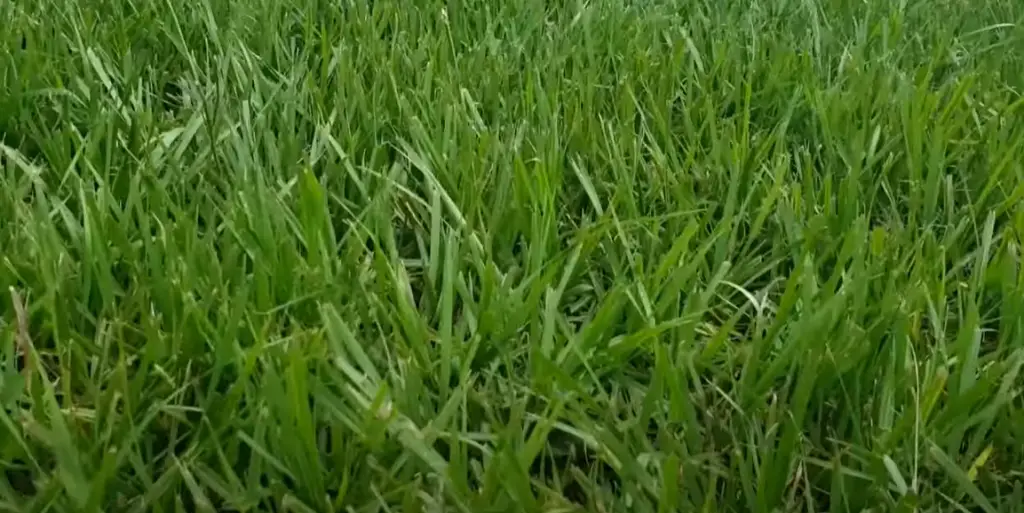
How To Grow Grass In Sand?
If you’re looking to grow grass in sand, there are several steps that you can take to ensure your success. First, you will need to select a variety of grass suitable for sandy soil. St. Augustine and Bahia grasses both do well in Florida’s sandy soils due to their tolerance for saltwater and drought-like conditions.
Once you have chosen the best type of grass for your location, it is important to test your soil before planting. This will allow you to determine the pH levels and nutrient content of your soil so that you can amend it accordingly. Proper watering is also key when growing grass in sand; be sure to water deeply several times a week but avoid over-watering which can lead to runoff or pooling of water.
In addition to watering, fertilizing your lawn regularly will help provide essential nutrients that promote growth and prevent weeds from taking hold in your lawn. Invest in a quality fertilizer specifically designed for Florida’s sandy soil when fertilizing; this will give your grass the best chance of flourishing.
Finally, be sure to set your mower blades higher when cutting grass in sandy soil; this will help reduce stress on your lawn and promote healthy growth. Also, be sure not to cut off more than one-third of the leaf’s height or you risk damaging the blades of grass.
By following these simple steps, you can have lush green grass in no time!
What Grass Doesn’t Weed Water in Florida?
When choosing a type of grass for Florida’s sandy soil, it is important to select one that can tolerate saltwater and drought-like conditions. St. Augustine and Bahia grasses are two varieties that do well in this region due to their low water requirements; they are also relatively resistant to weed growth.
These types of grasses will require less water than other varieties and are able to survive with minimal amounts of water. Additionally, their slow-growing nature helps keep weeds from taking over your lawn.
Remember – when selecting the best grass for Florida’s sandy soils, it is important to choose one that can tolerate saltwater and drought-like conditions and require minimal watering. St. Augustine or Bahia grass should provide you with the lush green lawn that you have been dreaming of! With proper care and maintenance, these types of grasses will help keep weeds away and leave you with a beautiful yard for years to come. [7]
FAQ
What grass grows best in sandy soil in Florida?
The best grass for Florida sandy soil is Bermuda grass. Other varieties that can do well include St. Augustine, Zoysia, and Bahia grasses.
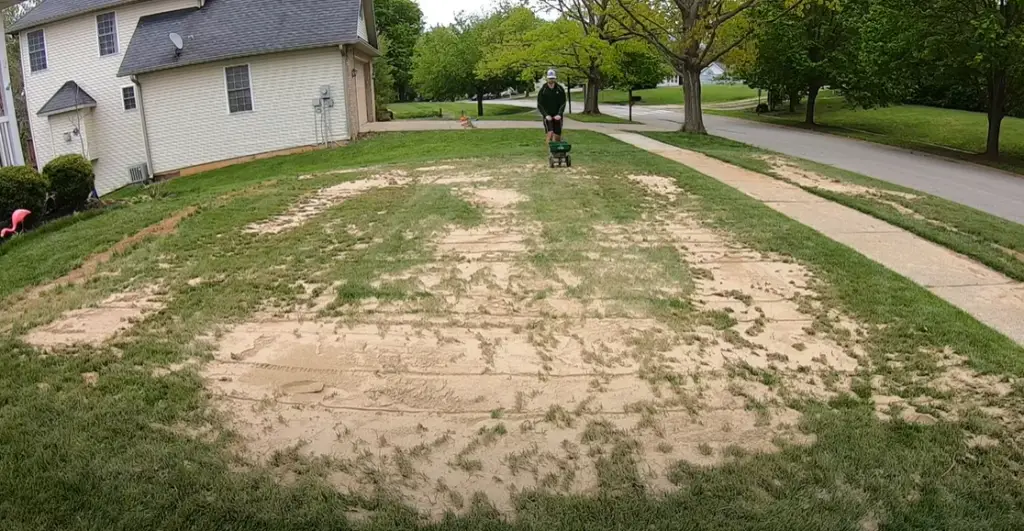
What type of care does Bermuda grass need in Florida’s sandy soil?
Bermuda grass requires regular mowing and fertilization to thrive in the sandy soil of Florida. It needs 1-2 inches of water per week during dry periods and should be fertilized two to four times a year with a fertilizer that is specifically designed for Bermuda grass. Additionally, it needs to be aerated at least once a year to help break up compacted soil so that nutrients can get into the root system more easily.
Are there any other options besides Bermuda grass for sandy soil in Florida?
Yes, there are other grasses that work well in sandy soil in Florida. St. Augustine, Zoysia and Bahia grasses all do well in the sandy soils of the state. They require less maintenance than Bermuda grass but may not be as durable or resistant to disease and pests. Does fertilizing help with drought conditions in Florida?Yes, fertilizing your lawn during periods of drought can help it better withstand dry conditions and recover more quickly once the rain starts again. Fertilizer helps keep your lawn healthy and able to withstand periods of stress from hot temperatures or lack of rainfall. Additionally, applying a slow-release fertilizer every few months can improve the overall health of your lawn, resulting in less water needed to keep your grass looking and feeling great.
What kind of fertilizer should I use in sandy soil in Florida?
A slow-release fertilizer specifically formulated for the type of grass you have is recommended for sandy soils in Florida. Be sure to follow the instructions on the package carefully, as over fertilizing can cause more harm than good. Additionally, consider adding a mulch layer to your lawn as this can help retain moisture and reduce evaporation in dry periods.
What is the most durable grass in Florida?
When it comes to the most durable grass in Florida, many homeowners choose Bermuda grass. With its ability to withstand the heat and humidity of a Floridian summer, Bermuda grass is an excellent choice for lawns in the region. Its deep root system helps aid soil stabilization and water retention, making it better able to resist drought conditions. It also grows quickly and can handle heavy foot traffic. Additionally, Bermuda’s thick texture gives it an attractive look and adds aesthetic value to any property.
What grass stays green year round in Florida?
One of the most popular choices for year-round green in Florida is St. Augustine grass. It’s a tough, easy to maintain grass that can withstand heavy foot traffic and doesn’t require much fertilization or mowing. Additionally, St. Augustine grows well in sandy soils, making it an ideal choice for those with Sandy soil in their lawns. Its thick blades create a lush green appearance throughout the year and its drought resistance helps keep it looking healthy even during dry spells.
What is the best grass for Northwest Florida sandy soil?
Northwest Florida is known for its sandy soil, making it especially challenging to find the best type of grass that will thrive in this environment. Luckily, there are several varieties of grass that can be grown successfully in Northwest Florida’s sandy soils. The most popular and successful types of grasses for this area include Bermuda grass, St. Augustinegrass, Centipede grass, Zoysiagrass, and Bahiagrass. Bermuda grass is a warm season perennial turfgrass which grows well with little maintenance in warm climates like Northwest Florida’s. It prefers full sun but can tolerate some shade and spreads quickly via runners or stolons to form a thick green lawn. Bermuda is relatively drought tolerant, but should be watered regularly during dry weather to maintain its lushness.
Useful Video: Best grass for Florida!
Conclusion
In conclusion, there are a variety of grass types that can be suitable for growing in Florida sandy soil. These include St. Augustinegrass, Bermuda grass, Centipedegrass, Zoysiagrass, and Bahiagrass. Each has its own benefits and drawbacks to consider before choosing the best option for your lawn or landscape. It is important to research each type thoroughly and consult with a professional if needed to ensure you pick the right grass for your unique soil conditions. With proper care and attention, any of these five types of grass can provide years of lush green beauty in your Florida landscape!
References:
- https://www.lawnandpetal.com/the-best-grasses-for-florida/
- https://sodsolutions.com/lawn-care-guides/the-best-grass-for-florida
- https://www.crabgrasslawn.com/grass-that-grows-in-sand/
- https://propertyclub.nyc/article/best-grass-seed-for-sandy-soil
- https://www.bobvila.com/articles/best-grass-for-sandy-soil/
- https://www.nglawns.com/learn/what-are-the-best-types-of-grass-for-florida-lawns/
- https://www.bestpickreports.com/blog/post/the-best-grass-types-for-south-florida-lawns/

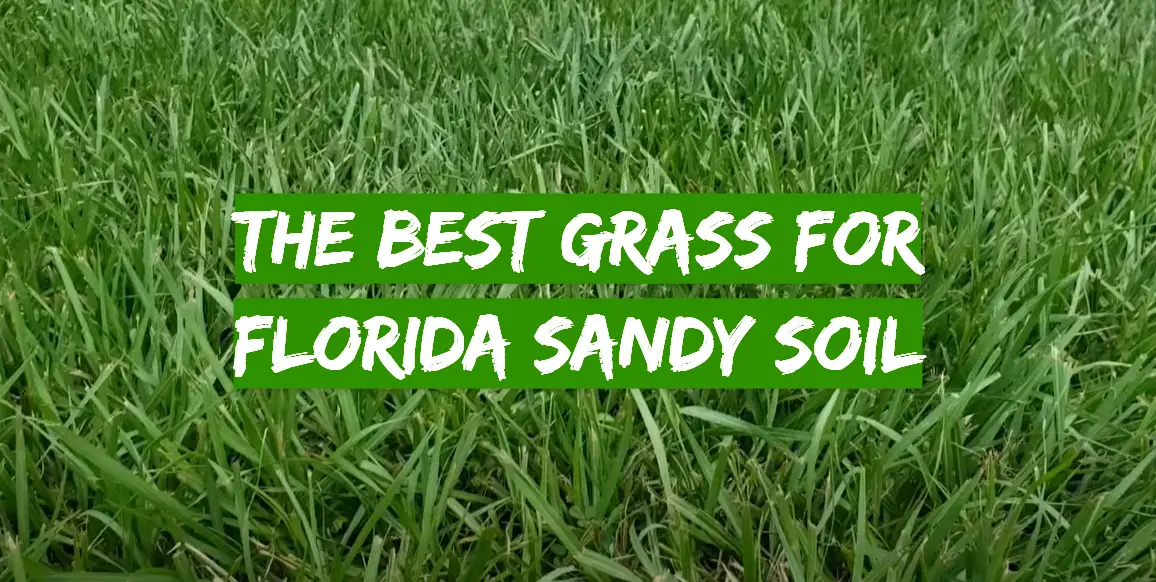


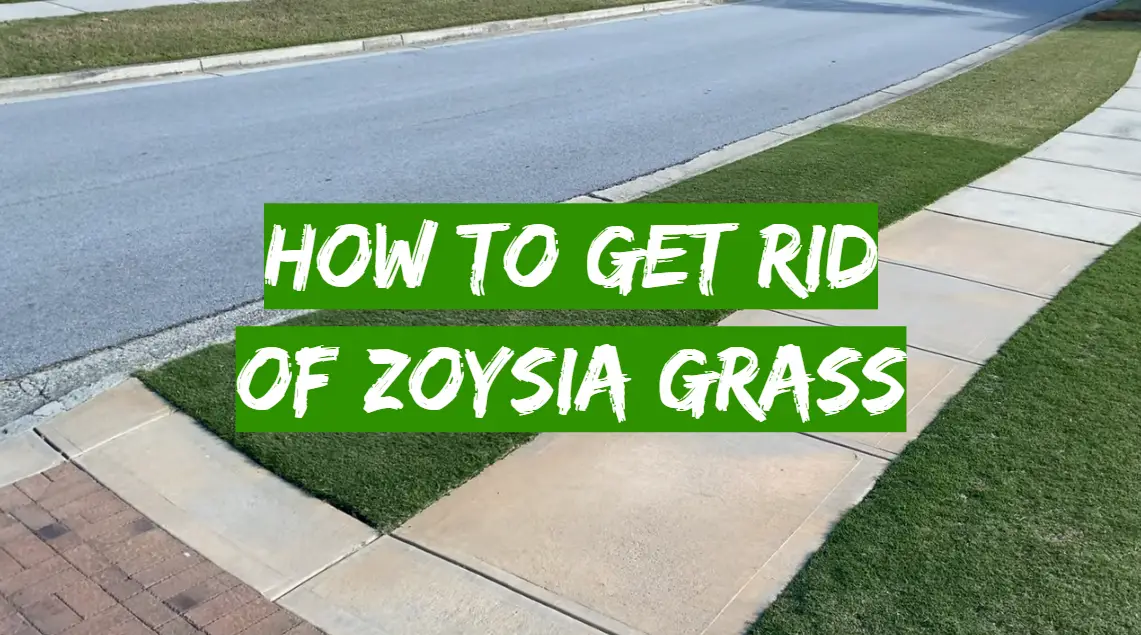
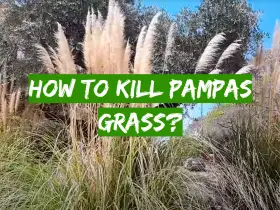

Leave a Reply
View Comments